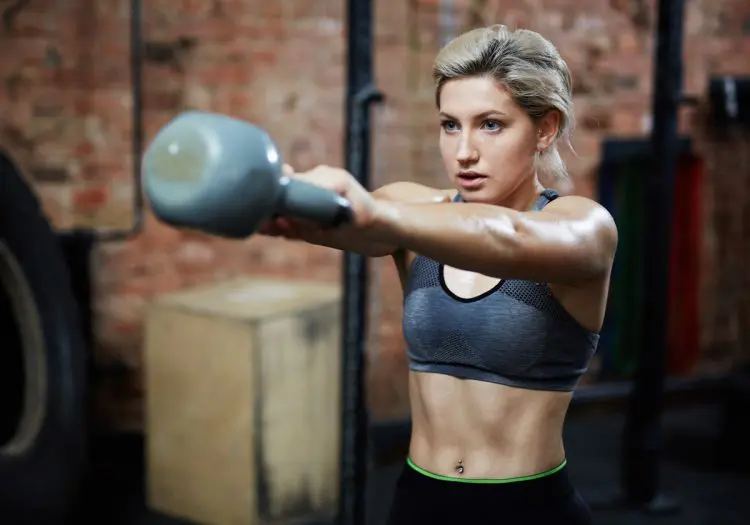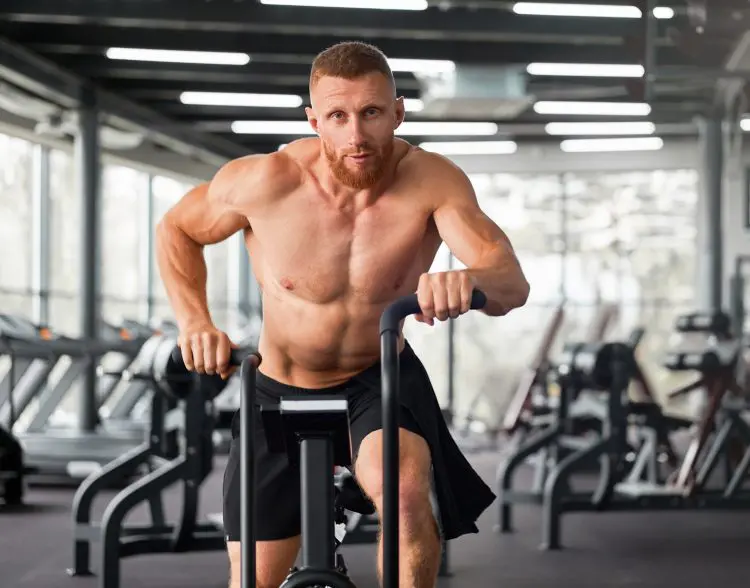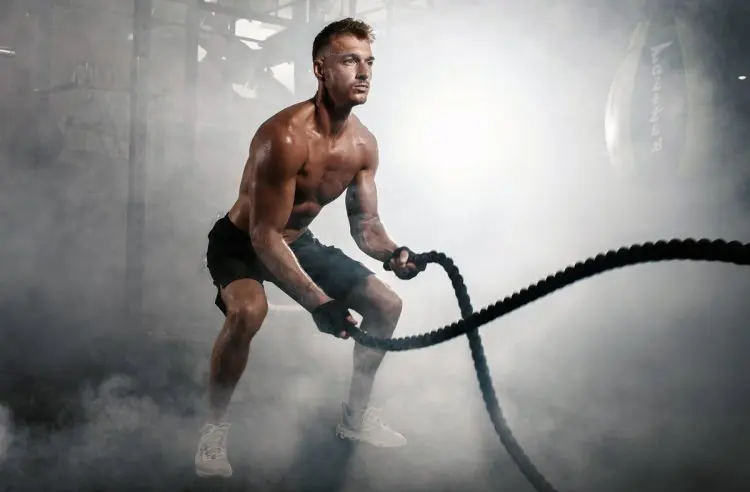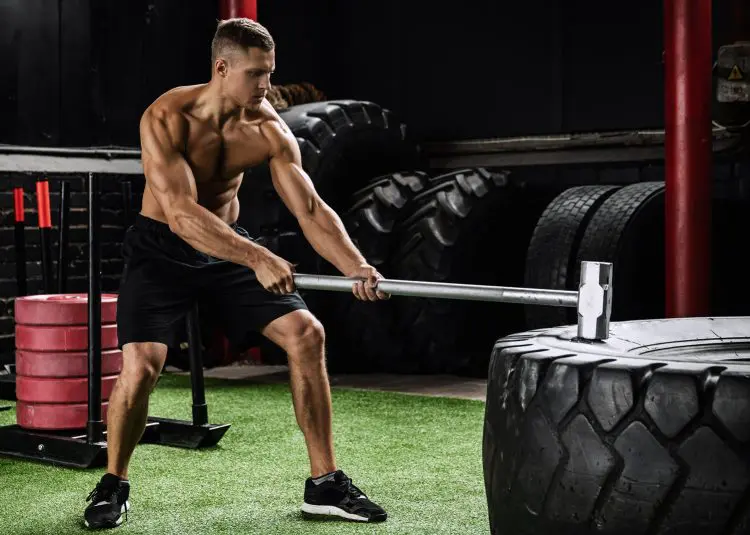One of the most common problems the modern working professional faces is a lack of time for exercise.
Between your busy work and home lives, you may find it difficult to fit in more than 30 to 60 minutes of time at the gym or working out every day. If you have to factor in time for transit (driving to/from the gym or park), stretching, and warming up and cooling down, you’ll find that your workout can end almost as quickly as it begins!
But what if there was a way to maximize your workout quality without demanding more time? By the time you reach the end of this post, you’ll know how HIIT can change your life—and your workouts—for the better!
What Does “HIIT” Mean?

HIIT stands for High Intensity Interval Training.
To explain it simply, it means interspersing intervals of high intensity with intervals of low intensity activity. This alternating intensity allows you to both push your body to its absolute limits, while also including time for rest and recovery between sets/exercises.
Level Up Your Fitness: Join our 💪 strong community in Fitness Volt Newsletter. Get daily inspiration, expert-backed workouts, nutrition tips, the latest in strength sports, and the support you need to reach your goals. Subscribe for free!
Here are a couple of examples of a HIIT workout:
- Running – Run at a high speed for 30 seconds, then jog/run at a low speed for 30-90 seconds. Repeat 10 times, or until you hit 20 minutes.
- Resistance Training – Perform a circuit workout of three exercises (Push-Ups, Pull-Ups, and Squats) with no rest between each exercise, then once you’ve finished all three, take a 60-second rest.
This combination of high intensity anaerobic exercise and low intensity recovery pushes your cardiovascular endurance as well forms muscular strength and endurance.
During the high intensity periods, your heart rate will typically rise to anywhere between 85 and 95% of your MaxHR. Of course, this isn’t sustainable for more than 30-45 seconds, and that’s where the low intensity intervals come in to give you a time to get your heart rate lower (around the 60-65% MaxHR) and in a fat-burning zone.
Related: Equipment-Free Full-Body HIIT Home Workout
Benefits of HIIT
What makes HIIT such an awesome choice to consider compared to a standard workout? Why is high-intensity training better than an hour-long resistance training session or low-intensity, steady-state cardio exercise (like jogging or cycling for an hour)?
Let’s take a look at the top benefits of HIIT:
More workout, less time
With those 20-40 second high intensity intervals, you push your body to its absolute limits. But, because these intervals are so intense, your workouts typically only last 15 to 25 minutes—that’s all the energy your body has in the tank to keep up with this incredibly demanding type of workout.
Because you’re constantly moving through exercises—either with resistance training cycles or high/low intensity cardio intervals—you get a maximum-quality workout in a fraction of the time.
Manage chronic disease
A 2016 analysis concluded that this training method proved highly effective in helping patients manage chronic disease, on par with or even better than the standard moderate-intensity training common to resistance trainees.
Improved cardiopulmonary function
A 2019 study found that HIIT led to significantly higher improvements in cardiopulmonary function among overweight and obese adults . A 2020 study showed the same benefits in adolescents, noting remarkable cardiorespiratory fitness thanks to the high-intensity workouts.
Even trained athletes (rowers) saw notable improvement in their cardiovascular endurance after just 10 weeks of performing regular HIIT workouts.
Better body composition
The above-mentioned 2019 study discovered that HIIT also improved body composition, promoting fat loss more effectively than the standard training types.
Enhanced heart health
HIIT has been proven to lower cholesterol and blood lipids very effectively—perhaps even more so than typical resistance or cardio training. A 2017 study found that fat oxidation increased as a result of HIIT, while a study from 2018 recorded visible improvements in resting blood pressure, heart rate reserve, and metabolic capacity in sedentary, aging adults (one of the groups most likely to suffer from cardiovascular problems).
Boost mental health
That’s right, HIIT can help to fight depression, as a 2019 study found! HIIT trainees saw a noticeable improvement in their mood after their training sessions, along with the other physical benefits mentioned above.
Greater endurance
In a 2017 study, it was discovered that HIIT increased the peak power output (a measure of endurance to higher exercise intensity) of male masters athletes (aged 60+ but who were fit and participated in regular competitions and athletic trials) after just nine HIIT sessions spread out across six weeks.
Improved hormone balance
The same 2017 study found that HIIT boosted free testosterone levels without raising total testosterone. This means that the testosterone levels in the body didn’t rise, but more of this critical growth hormone was “freed up” to perform the various functions for which testosterone is vital.
As you can see, there are A LOT of amazing reasons to add HIIT to your training cycles starting today!
Types of HIIT Workouts for Beginners
If you’re considering starting HIIT training, you may be wondering, “Well, what does a HIIT workout look like?”
Here are a few examples of HIIT workouts you can try:
Sprint Training

Sprint training is a very simple HIIT workout you can do to increase your cardiovascular endurance and run stamina.
To perform a sprint training workout:
Level Up Your Fitness: Join our 💪 strong community in Fitness Volt Newsletter. Get daily inspiration, expert-backed workouts, nutrition tips, the latest in strength sports, and the support you need to reach your goals. Subscribe for free!
- Warm up (walking or jogging) for 5-10 minutes to limber up your muscles
- Sprint for 20-45 seconds
- Walk or jog for 75-100 seconds
- Repeat the intervals for 15 to 25 minutes
This is a workout you can easily perform on a treadmill, at a running track, or even on the street (run for a block, walk for two blocks, etc.).
Tabata

This is probably the most famous of the HIIT workouts, and one typically used by resistance trainees trying to maximize workout intensity.
With a Tabata workout:
- Perform a full-body exercise (see exercise recommendations below) at maximum effort for 20 seconds
- Rest for 10 seconds
- Repeat the intervals—typically for 4 to 10 minutes
It ends up being a lot of resistance training volume in a very short period of time, and you walk away from that workout feeling utterly spent.
Related: Simple Guide To Tabata (High-Intensity Interval Training)
EMOM

This type of workout is amazing for pushing your cardiovascular endurance while also targeting muscular strength.
With an EMOM Workout:
- Set a HIIT timer to ring out every minute on the minute
- Decide on an exercise and an achievable number of reps to accomplish within the space of that minute (aiming for 30-45 seconds to complete the reps)
- Every minute on the minute, when the timer rings out, perform a set of the specific number of reps as quickly as you can.
- When you’ve completed the reps, rest for the remaining time left in that minute, or until the bell rings again
- Repeat the workouts every minute on the minute, for 20-25 minutes (depending on what muscle group/s you’re targeting)
Related: 10 Best EMOM Workouts to Burn Fat and Get Fit
15/35, 20/40, 30/30, 40/20
This is a way of dividing your time into periods of low and high intensity intervals.
Typically, beginners will start out with a shorter period of high intensity training and longer periods of low intensity recovery. The 15/35 interval (15 seconds of max intensity, 35 seconds to recover) is a good place to start, particularly if you’re doing high-intensity exercise like wind sprints, stair sprints, Burpees, Mountain Climbers, etc.
Once you can manage the 15 seconds, push it to 20 with the 20/40 (40 seconds of recovery). Do that for a few weeks, then try to even things out with the 30/30 (30 seconds of high intensity, 30 seconds of recovery). When you’re getting in really great shape, you can flip it around to the seriously intense 40/20 (40 seconds of intensity, 20 seconds of recovery).
Circuit Training

Circuit Training is an amazing option for beginner HIITers who want to push their bodies safely. It rotates between muscle groups, allowing the muscles to rest between sets but keeps your body moving. It’s also lower-intensity to begin with, but you can work your way up to pushing to 85 – 95% MaxHR as you get the hang of the workout.
Take this sample Circuit Training workout:
- Push-Ups (10 reps)
- Pull-Ups (3-6 reps)
- Bodyweight Squats (15-20 reps)
If you transition from one exercise to the next with no rest, you’ll get a full-body workout while still giving each muscle group a chance for recovery. Your cardiovascular system, however, will be working double-time to pump blood to all your working muscles, so you’ll feel that burn as you go through the set.
Move between each of these exercises without pause, and only take a 30-second rest after you complete the squats.
Repeat this simple cycle 5 or 6 times, and you’ve got yourself an amazing full-body workout!
Related: Circuit Training: The Ultimate Guide
An Important Note For HIIT Beginners
Higher-intensity exercises also bring a higher risk of injury. As you tire out (and trust me, you will tire out!), your form and posture have a tendency to get sloppy. It’s just the way our bodies work—they struggle to remain in control of our movements the more tired we get.
That’s why it’s so important to start out with simpler moves that you can master more easily before moving on to complex movements.
Also, HIIT typically involves some high-impact exercises that also carry injury risk if you’re not careful. You’ll run a much higher chance of injuring your knee, pulling a hamstring, or spraining an ankle while sprinting than jogging.
It’s vital that you listen to your body and be careful. At the first sign of injury, dial back the intensity and give your body a proper chance to recover!
Best HIIT Exercises for Beginners

Looking to get into HIIT workouts? Whether you’re thinking of a Circuit Training workout, an EMOM session, or a Tabata cycle, here are some of the best HIIT exercises you can do to push your body to its absolute limits:
- Burpees
- Mountain Climbers
- Bodyweight Squats (add weight as needed)
- Bodyweight Lunges (add weight as needed)
- Push-Ups
- Pull-Ups (Assisted Pull-Ups and Jumping Pull-Ups are excellent alternatives)
- Box Jumps
- Wall Balls
- Plank Hold
- High Knees
- Jumping Jacks
- Double Rope Jumps
- Sprints
- Squat Jumps
- Kettlebell Swings
- Rowing Sprints
- Lateral Lunges with Hops
- Lateral Skiers
- Butt Kicks
- Bear Crawls
- Heismann Lunges
These movements all push your body to its limits and target your muscles for a maximally effective workout!
What Do You Need for a HIIT Workout?
Nothing at all!
That’s right, you can do an excellent HIIT workout with nothing more than your bodyweight.
Take a look at the list of exercises above, and you’ll see that most of them involve no equipment at all. Just moving your bodyweight around is more than enough to give you one heck of an excellent workout. A few sets of Sprints, Push-Ups (in all its variations), Pull-Ups, Squats, and Planks, and you’ll feel the burn.
If you want to add more gear to your home gym to maximize the effectiveness of your workouts, consider:
- A jump rope. Jumping rope is amazing high-intensity exercise, particularly double jumps
- Kettlebells. Kettlebells can be used for all sorts of exercises (including kettlebell swings) and are incredibly versatile.
- Dumbbells. Dumbbells are also very versatile and can enhance the effectiveness of your resistance training.
- A pull-up bar. Nothing works your upper back quite as effectively as pull-ups, so if you can install a bar in your home, do it!
- Cardio machines. A treadmill, stationary bike, or rowing machine can be a useful addition to your at-home HIIT sessions.
Conclusion
High Intensity Interval Training is a game-changing workout that can maximize results in a fraction of the time. If you’re looking to boost your metabolism, target your cardiovascular system, increase muscular strength and endurance, and get an amazing workout in your busy schedule, HIIT may be just what you need!










